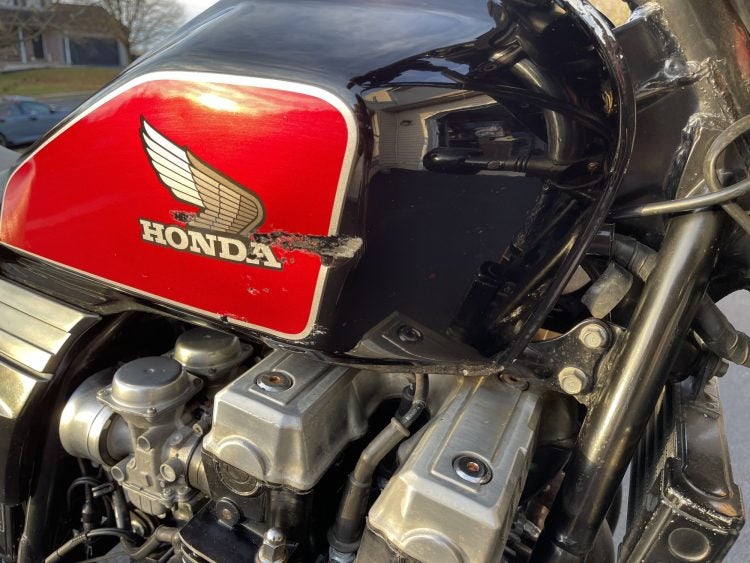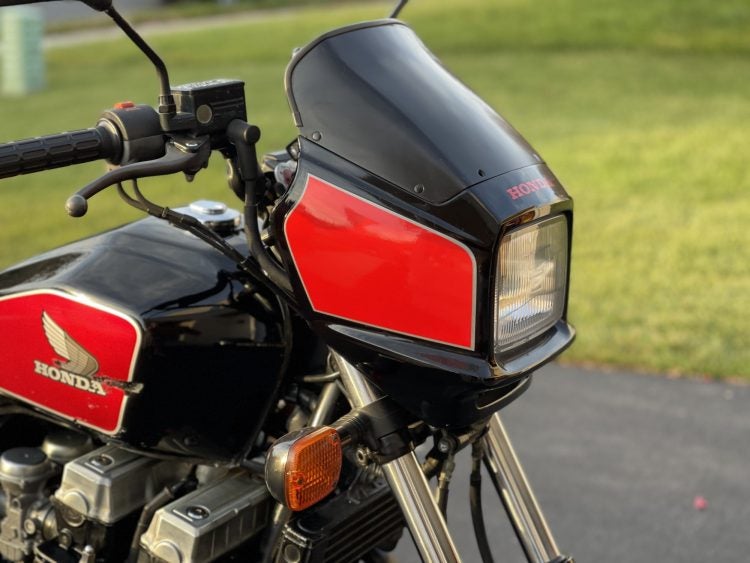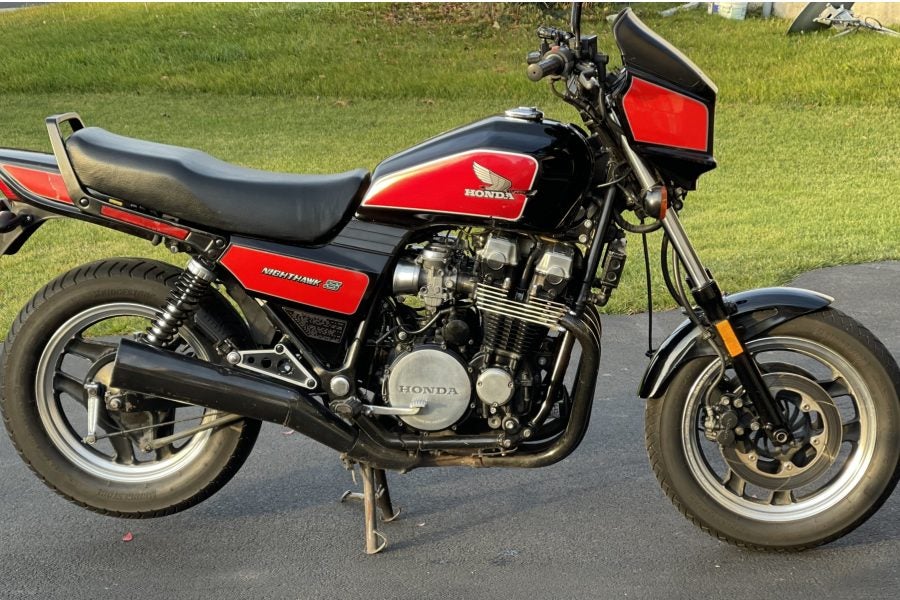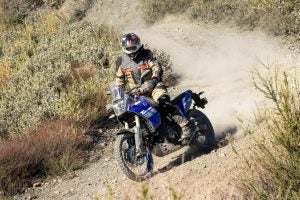The theme in motorcycling today is “build parallel twins; we can make money on them, because they’re cheap.” But back in the 1980s, the theme was “build four-cylinders; we can make money on them, because people want power.” The Japanese OEMs had been refining their own designs and assessing their competitors’ engines for a decade or more, so by the mid-’80s, they were starting to branch out into more refined ideas. Honda was foremost here, with ideas like the dual-range gearbox in the CB900… and the highly practical, yet still powerful, Nighthawk S. Today, the original Nighthawks might be the easiest UJMs to live with long-term, and the Nighthawk S might be the best of those first-gen machines.
Peak CB750
The Nighthawk was an offshoot of the CB750 lineup, but if you’re an American rider, you probably have a 700 cc version. As has been explained so often before, Harley-Davidson was understandably upset when the Japanese started building cruisers, and petitioned Ronald Reagan to do something about it. The Gipper’s response was a tariff on Japanese motorcycles with engines larger than 700 cc. That’s why you see so many ’80s bikes that were 750s in the rest of the world, but only 700s in the US.

Too bad about the damage here, but that’s fixable. Check out the sneak peek of that lovely 16-valve head below… Photo: Bikemanb12
The Nighthawk S debuted in 1984, then, with a 750 four-cylinder in most of the world, and a 700 engine in the States. It was an evolution of the Nighthawk lineup, which had started a couple of years earlier with the CB450 Nighthawk, then the CB650 Nighthawk. These were semi-cruiser machines—not low-riders, but with “custom” styling—but they had a parallel twin and an inline four respectively, not V-twins. They were built for a commuter with a bit of a repressed wild side and an appreciation for get-up-and-go. Both were sturdy bikes, practical and well-liked, with no trouble keeping pace with traffic. Decades later, when I was a university student, you still saw a lot of them on the used market in good running order.
Then the Nighthawk S appeared, taking that idea to the next level. Honda gave the Nighthawk S a stiff frame, an air-adjustable anti-dive front end and damping-adjustable twin-shock suspension tied into a box-section swingarm. The front wheel was a 16-incher. In other words, it wasn’t the wobbly Flexi-Flyer that so many custom-style machines had in the 1970s and 1980s. It could corner without giving you nervous colonic spasms. Just watch Freddie Spencer in the advert below:
People refer to the Nighthawk S as a sportbike now, despite its practicalities. The high-revving air/oil-cooled six-speed engine made around 80 hp as long as you put gas into the tank and remembered to change the oil. The 16-valve engine was derived from the CBX750 four-cylinder, with hydraulic valve lash adjustment, just like Harley V-twins. No need to open the head every few thousand miles, to check valve clearances. There were some other internal changes as well, particularly on the US-market model thanks to the change in displacement.A hydraulic clutch came standard, a big improvement over the cable clutches that were pretty much standard then.
The Nighthawk S also got a shaft drive. That drove the weight up to 516 lb wet, but a lot of owners were happy to have less driveline maintenance duties. Gas tank capacity was 4 USG, and with a claimed 42 mpg fuel economy, you could tour in comfort, if you were tired of canyon-carving. A bikini-style headlight fairing gave you protection from wind and fit the lines of sporting machines of that era. It was a bike that looked good, had good power for that era, and cornered well enough to suit most owners without costing them much time or money in maintenance.

An ’80s look that still works today. Photo: Bikemanb12
As far as a blend of practicality and performance, it really was on top of the game in its era, and few machines have combined these characteristics in such a way since.
The Nighthawk S today
Although the Nighthawk S is by no means a performance bike in our current world, it can still be very fun to ride. These bikes are well-appreciated on the ADVrider forum (see thread here). They’ve always been somewhat desirable, and bought up by those in-the-know, but prices have never gone too crazy. That might be because after the original three-year production run, Honda revived the Nighthawk name later with a similar 750 model, so they’re not super-hard to find if you really want one. And when you find one, you don’t have to worry about maintenance, as the engine and driveline are trouble-free. Other Japanese four-cylinders will cost you a lot of money with simple things like gaskets, as you perform routine maintenance (my Bandit 1200S valve adjustment cost me over $200 in replacement gaskets last winter). This is much less of an issue with the Nighthawk S! You can just keep the consumables in order, and ride.

That seat was pretty comfortable, too. Really, a great machine that worked in just about every role, like an upscale version of Suzuki’s Bandit 1200 that came along later, or Yamaha’s current MT-09 series. Or maybe like Honda’s own Hurricane 600, although that machine had more of a sport focus, obviously. Photo: Bikemanb12
This bike here
The bike seen here is for sale by forum inmate Bikemanb12. All he says in the advert is this:
Time to let my classic go. 100% original and running perfectly. Small ding in the tank but that’s it as far as flaws. Located in southeast PA. $3500.
It looks clean enough, and if it does run perfectly, maybe you can do a vintage fly-and-ride? See the ad here, if you want to contact him.







